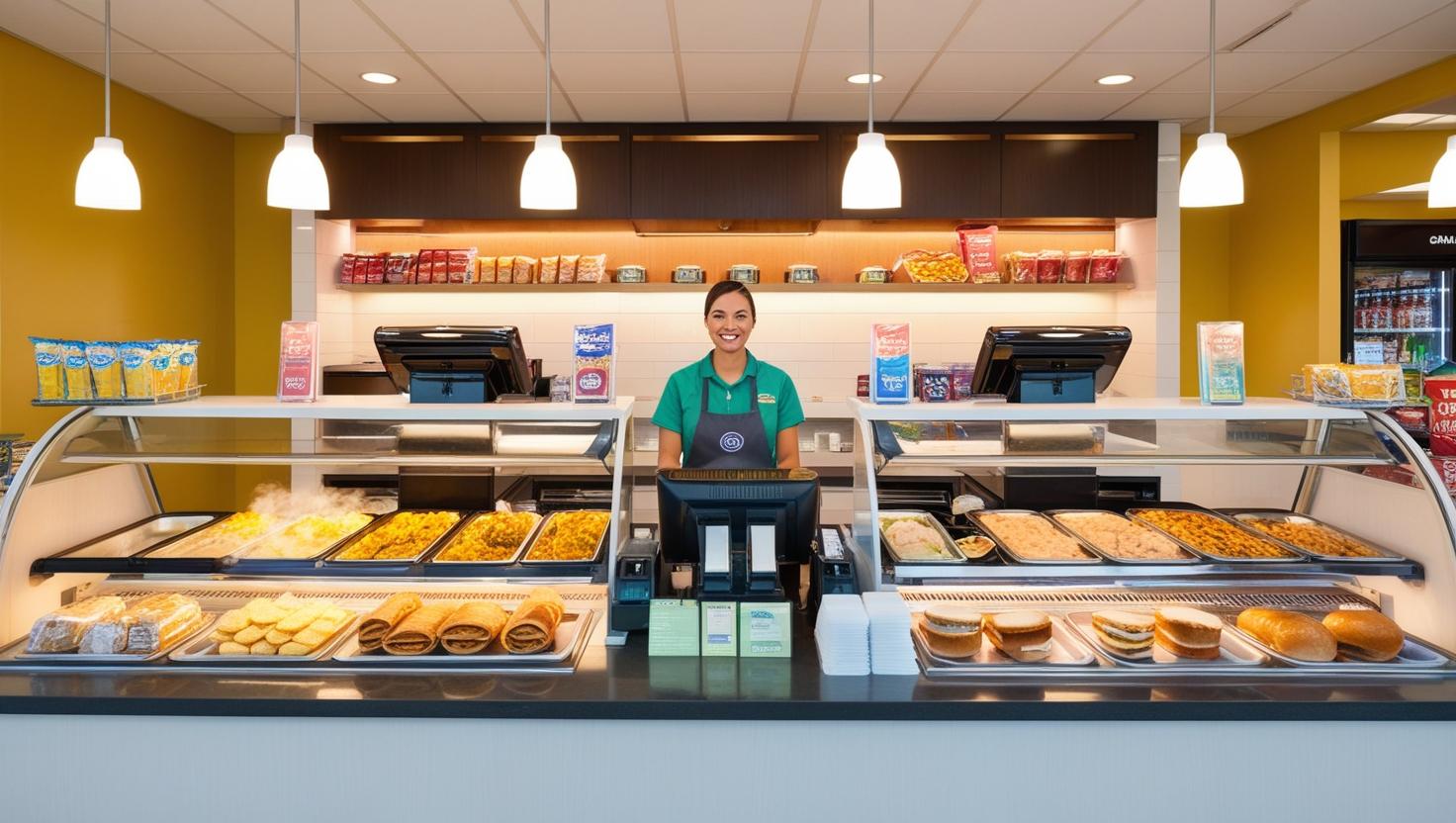Convenience stores faced challenging conditions in the post-pandemic economy. 7-Eleven has announced the closure of 444 stores in North America. The industry as a whole is suffering because its key demographic is lower-and middle-income earners. Those customers have not profited from a booming stock market and are proportionally more affected by the accumulative effect of inflation.
The industry has had to innovate, and one key trend has been to boost food offerings. By offering better and wider options, c-stores are now competing with quick-service-restaurants (QSRs).
How have c-stores innovated with their food offerings in 2024? Here are some highlights.
1. Elevated Store Design & New Concepts
- 7-Eleven: Launched a larger, more food-focused store design and plans to open hundreds of new-format stores in the coming years.
- QSR-style Concepts in C-Stores: A growing number of convenience retailers are adopting quick-service restaurant (QSR)-like offerings.
- Onvo: Introduced its new Food on the Fly concept at a Pennsylvania location, featuring bowls, sides, and new menu items like Craveritos, with plans to roll it out to all its 39 sites.
- Schmitz Sunoco: Debuted the Gastro High Octane Eats concept inside an A-Plus store in Virginia, serving breakfast and lunch sandwiches, pizzas, salads, and desserts.
- Rebel Convenience Stores: Launched Hatch Chicken Co., featuring fried chicken, tenders, sandwiches, and comfort-food sides, aiming to expand to 20 of its 100-plus stores by next year.
2. Multiple Food Concepts Under One Roof
- EG America: Piloting three distinct foodservice concepts (Alanza Pizza, Burger Baby, and Wing Trip) in one Cumberland Farms store in Massachusetts. This experiment is to see if multiple food stops will work in one location.
3. Value Meals & Competitive Positioning
- Alimentation Couche-Tard: Viewing their stores as QSR competitors, they emphasize the ability to bundle and co-market energy drinks with meals to differentiate from traditional fast-food combos.
- Value-focused deals have proliferated among major convenience retailers like Circle K, EG America, and GPM Investments, attracting cost-conscious customers and driving transaction growth.
4. Ongoing Menu Innovation & Expansion
- BP (Thorntons, ampm, TravelCenters of America): Implemented new pizza programs at Thorntons and a Tex-Mex menu at TravelCenters of America. A private label brand is also being developed for all three banners.
- Rutter’s: Leveraging limited-time offers (LTOs) and gradually adding permanent menu items, such as Tres Picosos burritos, to keep customers engaged with fresh flavors.
- Pilot: Rolled out new bold-flavored items like Nashville hot wings and spicy Italian pizza.
- 7-Eleven: Continued expanding its proprietary brands, including additions at its Raise the Roost and Laredo Taco Company concepts (e.g., quesabirria: birria-style beef with cheese — in both a taco and a bowl).
5. Partnerships with Unique Restaurants
- Gas N Wash: Incorporating regional and local eateries into its stores. A recent highlight is a partnership with Mickey’s, a Greek-style QSR known for gyros, burgers, and fried seafood. Gas N Wash also includes other Chicago-area favorites like Rosati’s Pizza, Do-Rite Donuts, and Beggar’s Pizza in its rotation.
- Love’s Travel Stops & Country Stores: Building on its partnership with Naf Naf Middle Eastern Grill, expanding from initial sites to a total of 11. Customers responded enthusiastically, driving further growth.
- Temp-Stop: Entered into a deal with Huddle House to bring full-service dining (breakfast, lunch, and dinner) to its convenience store locations in Missouri, creating a sit-down experience adjacent to the c-store.
A Big Year For C-Store Innovation
2024 was a challenging year for convenience stores. C-stores pushed hard to drive revenue growth by offering fresh, made-to-order menus, QSR-style concepts, and unique culinary partnerships. Retailers are not only elevating their store designs to emphasize food but are also experimenting with various menu categories. These moves underline the industry’s ambition to compete directly with established QSRs, enhance perceived value, and meet evolving consumer cravings.


Recent Comments